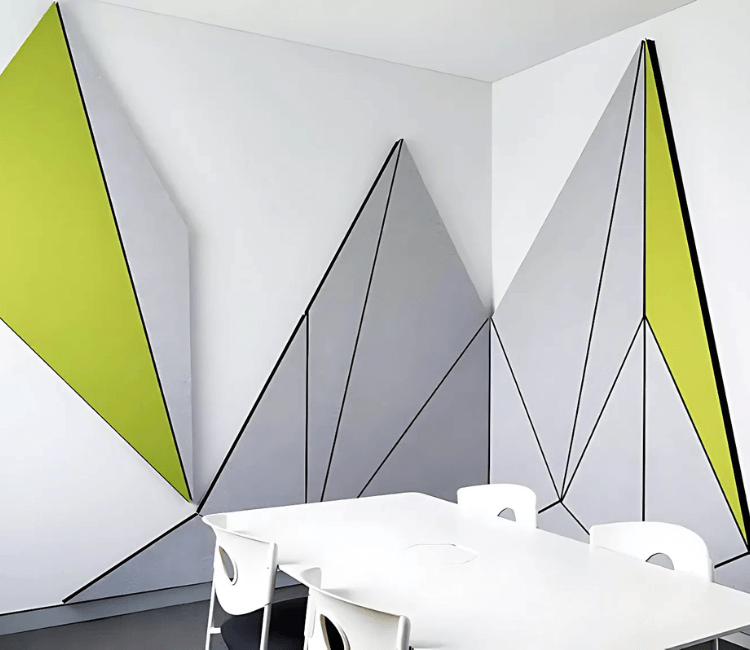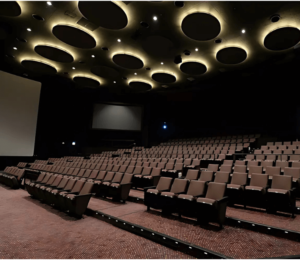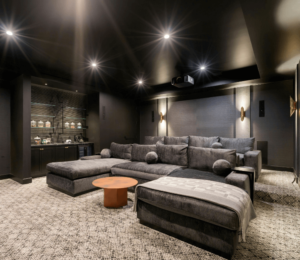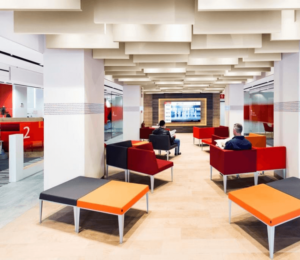In Saudi Arabia’s bustling cities—from Riyadh’s corporate towers to Jeddah’s vibrant entertainment venues—uncontrolled noise and echo can disrupt productivity, comfort, and even health. Gitco’s sound absorption solutions are engineered to tackle these challenges, optimizing acoustics in offices, studios, hospitality venues, and homes.
Table of Contents
This guide covers:
✔ What is sound absorption?
✔ Key benefits of acoustic treatment
✔ Gitco’s premium sound absorption products
✔ Industry-specific applications
What is Sound Absorption?
Sound absorption reduces reverberation and echo by converting sound energy into heat as it passes through specialized materials. Unlike soundproofing (which blocks noise), absorption improves interior acoustics by minimizing reflections.
Why It Matters
- Offices: 60% of employees report reduced focus due to noisy open-plan spaces (Gensler)
- Restaurants: Excessive reverberation lowers customer dwell time by 22%
- Recording Studios: Flutter echo ruins vocal and instrument clarity
Gitco’s Sound Absorption Product Range
1. Acoustic Panels
| Type | Best For | Performance |
|---|---|---|
| Fabric-Wrapped Panels | Offices, conference rooms | NRC 0.90+, customizable finishes |
| PET Felt Panels | Studios, auditoriums | Eco-friendly, high-density absorption |
| Perforated Wood Panels | Luxury hotels, lobbies | Aesthetic + acoustic (NRC 0.85) |
2. Ceiling Solutions
- Baffles: Hanging absorbers for atriums (e.g., VOX Cinemas installations)
- Clouds: Overhead panels to control mid/high frequencies
- Tiles: Drop-ceiling options with up to NRC 1.0
3. Specialty Absorbers
- Bass Traps: Low-frequency control in corners
- Acoustic Curtains: Portable absorption for windows/doors
- Diffuser-Absorber Hybrids: For spaces needing balanced acoustics
Industry Applications
1. Corporate Spaces
- Problem: Open-plan offices suffer from 50 %+ speech distraction
- Solution: Ceiling baffles + wall panels (reduce RT60 to <0.6s)
2. Hospitality
- Problem: Restaurants with >1.2s reverb see 18% lower sales
- Solution: Custom perforated wood panels (absorb chatter, preserve ambiance)
3. Education
- Problem: Students miss 30% of speech in echoey classrooms
- Solution: Fabric-wrapped wall panels (STI improvement of 40%)
4. Recording Studios
- Problem: Standing waves distort mixes
- Solution: Bass traps + broadband absorbers (flatten frequency response)
Why Choose Gitco?
✅ Local Expertise: 100+ projects in Saudi Arabia (including KAPSARC, Novo Cinemas)
✅ Science-Backed Designs: CATT-Acoustic modeling for precision
✅ Aesthetic Flexibility: Panels in custom colors, prints, and shapes
✅ Fire & Safety Compliance: Class A fire-rated materials
Sound Absorption Solutions – Frequently Asked Questions :
Sound absorption is a crucial aspect of creating comfortable and functional spaces. By reducing unwanted reflections and reverberation, sound absorption solutions improve clarity, reduce noise levels, and enhance the overall acoustic environment. Let’s explore common questions about sound absorption and how Gitco can help you achieve your acoustic goals.
- What is sound absorption?
* Sound absorption is the process by which a material or structure soaks up sound energy rather than reflecting it. This reduces the overall sound level and reverberation within a space. - Why is sound absorption important?
* It improves speech intelligibility, reduces noise-induced stress, enhances focus and productivity, creates a more comfortable environment, and can improve the quality of recordings or performances. - What is reverberation?
* Reverberation is the persistence of sound in a space after the original sound source has stopped. Excessive reverberation makes speech unclear and creates a “boomy” or echoey effect. - How is sound absorption measured?
* Sound absorption is measured by the Noise Reduction Coefficient (NRC), a value between 0 and 1 that indicates how much sound a material absorbs. A higher NRC means more absorption. - What materials are used for sound absorption?
* Common materials include fiberglass, mineral wool, foam, fabric-wrapped panels, and specialized acoustic materials designed to efficiently absorb sound waves. - What are acoustic panels?
* Acoustic panels are sound-absorbing materials, often fabric-wrapped, mounted on walls or ceilings to reduce reflections and reverberation. - Where should acoustic panels be placed?
* They are most effective at primary reflection points (where sound bounces off surfaces towards the listener) and strategically placed to balance absorption throughout the room. - What are acoustic ceiling tiles?
* Acoustic ceiling tiles are designed to absorb sound, reducing reverberation in rooms. They are often used in offices, classrooms, and other commercial spaces. - What are acoustic baffles and clouds?
* These are suspended sound-absorbing elements, often used in large spaces with high ceilings to increase absorption without covering the entire ceiling. - What is the difference between sound absorption and soundproofing?
* Sound absorption reduces sound within a space, while soundproofing blocks sound from entering or leaving a space. - Can curtains or carpets help with sound absorption?
* Yes, soft materials like heavy curtains and carpets can absorb some sound, especially at higher frequencies, but they are generally less effective than dedicated acoustic panels. - What are bass traps?
* Bass traps are specialized absorbers designed to control low-frequency sound waves, which are often difficult to manage with standard acoustic panels. - What is the ideal reverberation time for different spaces?
* The ideal reverberation time varies depending on the room’s use. Shorter times are preferred for speech-heavy environments, while longer times may be suitable for music performance spaces. - How does room size affect sound absorption needs?
* Larger rooms generally require more sound absorption to control reverberation effectively. - Are there eco-friendly sound absorption solutions?
* Yes, many manufacturers offer acoustic panels made from recycled materials or sustainable resources. - How does Gitco assess sound absorption needs for a space?
* We conduct acoustic analysis, considering room dimensions, intended use, and existing noise levels to recommend appropriate solutions. - Does Gitco offer custom sound absorption solutions?
* Yes, we can provide tailored solutions, including custom-sized and designed acoustic panels, to meet specific aesthetic and acoustic requirements. - What are the fire safety standards for sound absorption materials?
* Acoustic materials must meet fire safety regulations to ensure the safety of occupants. Look for Class A or equivalent ratings. - Can sound absorption improve the quality of recordings?
* Yes, controlling reflections and reverberation in a recording space is crucial for capturing clean and accurate audio. - How can I get started with Gitco to improve the sound absorption in my space?
* Contact our team today for a consultation. We can assess your needs and provide tailored solutions to create a more comfortable and functional sound environment.
Get Your Free Acoustic Assessment
Transform your space with Gitco’s engineered sound absorption solutions.



